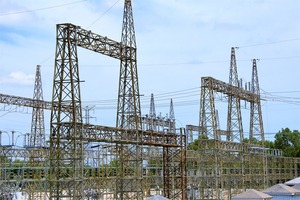Body
Toroidal inductors are a popular choice in various electronic applications due to their unique design and performance characteristics. Their toroidal (doughnut-shaped) core offers several advantages over traditional inductors, making them ideal for specific uses. This blog delves into the benefits of toroidal inductors and explores their diverse applications.
Benefits of Toroidal Inductors
1. Reduced Electromagnetic Interference (EMI)
One of the primary benefits of toroidal inductors is their ability to minimize electromagnetic interference. The closed-loop design of the toroid confines the magnetic field within the core, reducing the external magnetic field. This containment limits the interference with nearby electronic components, making toroidal inductors ideal for applications sensitive to EMI.
2. High Efficiency
Toroidal inductors typically exhibit higher efficiency than their counterparts. The continuous magnetic path in the toroid reduces core losses and enhances magnetic coupling. This efficient design minimizes energy losses, making toroidal inductors suitable for high-efficiency power supplies and converters.
3. Compact Design
The toroidal shape allows for a more compact and space-saving design. The windings are evenly distributed around the core, leading to a smaller footprint and higher inductance per unit volume. This compactness is particularly advantageous in modern electronic devices where space is at a premium.
4. Lower Core Saturation
Toroidal inductors can handle higher currents without saturating the core compared to other core shapes. This characteristic is beneficial in applications where high current handling is required, ensuring consistent performance even under heavy load conditions.
5. Superior Thermal Performance
The design of toroidal inductors promotes better heat dissipation. The even distribution of windings and the use of efficient core materials help manage heat more effectively. This superior thermal performance extends the lifespan of the inductor and maintains reliability under continuous operation.
Applications of Toroidal Inductors
1. Power Supplies
Toroidal inductors are extensively used in power supplies, including switch-mode power supplies (SMPS) and linear power supplies. Their high efficiency and compact design make them ideal for filtering and energy storage applications, improving the overall performance of the power supply.
2. Audio Equipment
In audio equipment, toroidal inductors help reduce EMI, ensuring cleaner and higher-quality sound. They are commonly found in audio amplifiers, crossover networks, and speaker systems, where maintaining signal integrity is crucial.
3. RF Circuits
Radio frequency (RF) circuits benefit from the low EMI and high efficiency of toroidal inductors. These inductors are used in RF filters, impedance matching networks, and oscillators, where precise inductance values and minimal interference are essential for optimal performance.
4. Renewable Energy Systems
Toroidal inductors play a vital role in renewable energy systems, such as solar inverters and wind turbine controllers. Their ability to handle high currents and efficient energy transfer makes them suitable for managing the variable power output from renewable sources.
5. Telecommunications
In telecommunications, toroidal inductors are used in various signal processing and filtering applications. Their compact design and superior performance make them suitable for modems, routers, and other communication devices where space and efficiency are critical factors.
6. Industrial Equipment
Toroidal inductors are found in industrial equipment, including motor drives, welding machines, and power converters. Their robust design and high current handling capabilities ensure reliable operation in demanding industrial environments.
Design Considerations
When designing with toroidal inductors, several factors need to be considered:
- Core Material: Choose a core material that matches the application's frequency and current requirements. Ferrite cores are common for high-frequency applications, while powdered iron cores are used for lower frequencies.
- Winding Techniques: Proper winding techniques ensure optimal performance. Uniform and tight windings reduce parasitic effects and improve inductance stability.
- Thermal Management: Implement adequate cooling methods to manage heat dissipation, especially in high-current applications. Proper ventilation and heat sinks can enhance thermal performance.
Conclusion
Toroidal inductors offer numerous benefits, including reduced EMI, high efficiency, compact design, lower core saturation, and superior thermal performance. These advantages make them suitable for a wide range of applications, from power supplies and audio equipment to RF circuits and renewable energy systems. By understanding their benefits and applications, engineers and designers can effectively leverage toroidal inductors to enhance the performance and reliability of their electronic circuits.












Comments